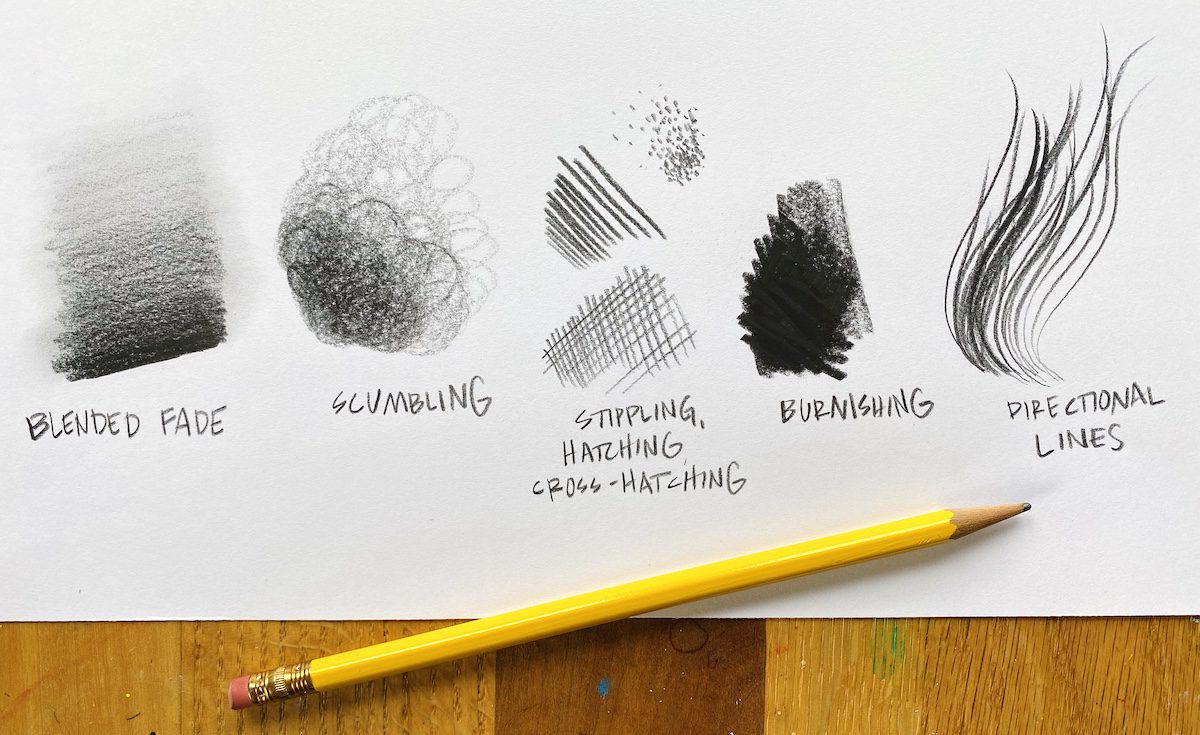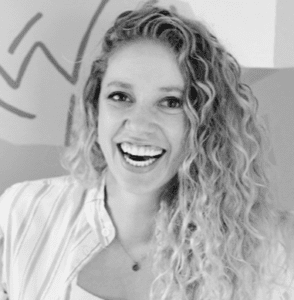Return to Learn with The Art of Education University
Whatever your model of teaching art is this year, managing supplies is likely at the forefront of your mind. Perhaps you are trying to figure out how you are going to sanitize all the shared materials or what supplies are necessary for adequate art kits.
We feel the limitations of creating art through distance learning and student access to quality art materials. However, these restrictions only invite an enhanced need for creativity. As we know, art teachers are some of the most creative people around!
How can you create art with the most minimal supplies, pencil, and paper?
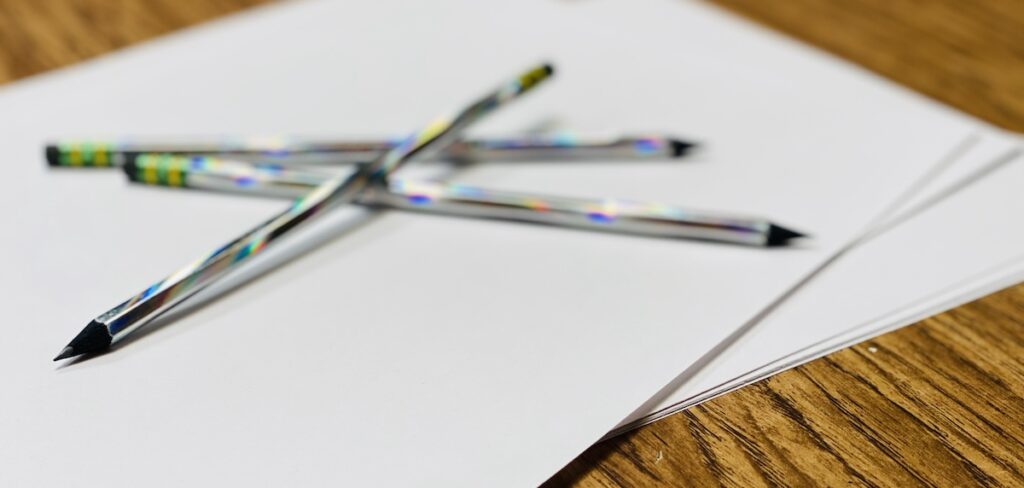
We can’t assume all our students have pencils and paper in their living space, but the chances are high. If students don’t specifically have paper and pencils, you can always remind them to substitute a pen for a pencil, or recycled cardboard for a clean piece of white paper. As artists, we always use what is most easily accessible. Using what is around us in our environment helps to cultivate our own artistic story.
Check out a few of these talented pencil artists to share with your students as inspiration. These artists have strictly honed in their technique to create hyper-realistic works of art. It’s pretty inspiring to see what can be done with “minimal” supplies.
- Arinze Stanley
- Raja Cenna
- Olajide Oluwamayowa
- Johnson Eziefula
- CJ Hendry
- Kelvin Okafor
- Adonna Khare
- Jhonsen Ocheja
- Hopex John
- Diego Fazio
So, let’s break it down. If you only have access to a pencil and paper, what can you help facilitate your students to create on their own? Let’s take a look at the techniques and projects in which you can offer ideas for your students using these minimal supplies.
5 Techniques to try with a pencil and paper:
Before getting started on some awesome pencil drawing projects, it’s best to show your students to the extent to which pencils can be used to create different effects. It’s always fun to challenge your students to “use this tool in a way that I’ve never seen before.”
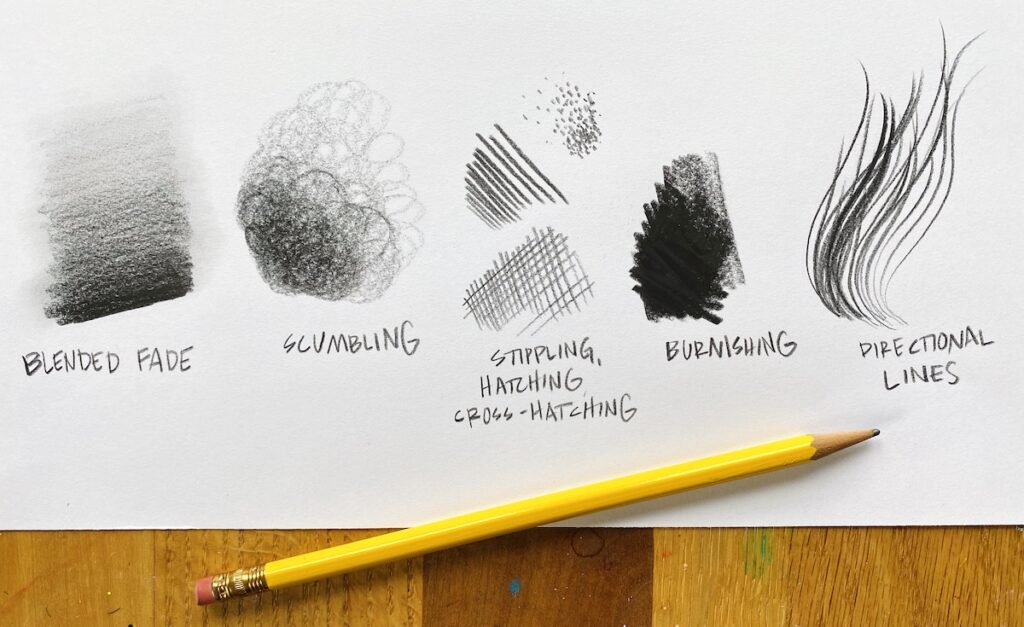
1. Blended Fade
Adding value with differing pressure is one of the main characteristics that makes pencils so awesome to use. It’s nearly impossible to create varying lightness and darkness with marker pressure, but with a pencil, the result of varying pressure can be seamless.
2. Scumbling
Draw with the pencil in circular marks, adding a variety of pressure as you go. The more complex and tight the scumbling is drawn, the darker the value of the pencil will appear. Challenge your artists to invent a new version of scumbling like a specific repeated scribbled line pattern.
3. Crosshatching, Hatching, or Stippling
Use short pencil line marks to create dashes, crossed lines, or dots to fill in areas of your artwork with value. You could modify these techniques to stipple with a certain letter or design.
4. Burnishing
Pressing hard with any kind of pencil, create patches of graphite marks until the surface appears shiny and smooth. This is a fun drawing effect for shiny objects like ceramics or glass.
5. Directional Lines
Following the movement of the object, use swooping lines to bring attention to certain areas of artwork. Experiment with gentle pressure changes of your directional lines for added complexity.
10 Projects to Create Using Pencil and Paper:
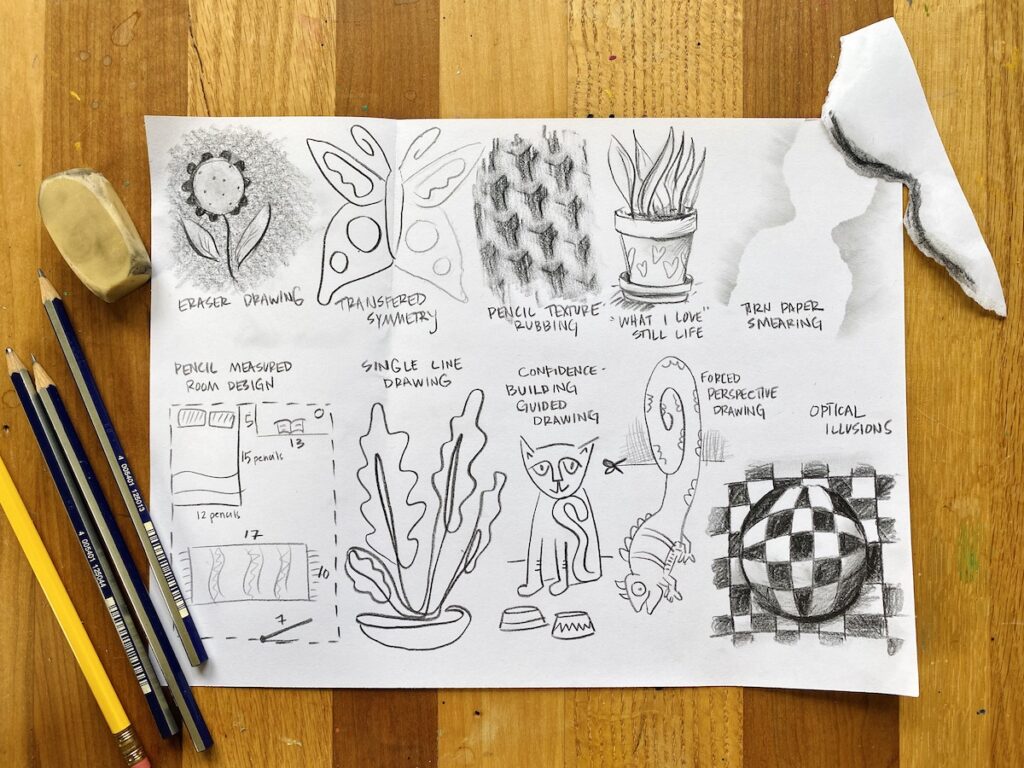
1. Eraser Drawing
Completely cover the surface of the paper with a mid-tone value of pencil. Using the eraser of the pencil, erase parts of the value to expose the white paper. Using dark pressure with the pencil, make heavy outlines to accentuate the composition.
2. Transferred Symmetry
Fold a piece of paper in half. Using hard pressure, start at the folded line of symmetry and draw one side of a symmetrical object like a butterfly or face. Fold the paper in half and use the hard part of the pencil body to rub the two sides of the paper together, transferring the graphite. Retrace the transferred image and design your symmetrical drawing.
3. Pencil Texture Rubbings
Place a textured material, such as a leaf or a notebook spiral, underneath your paper. Using the wide side of your pencil, run your pencil over the area where the texture is below the paper. Search for a variety of textures to create a completed composition.
4. “What I love” Still Life
Collect and arrange a still life of objects you love. Using your skills of observation, try your best to draw the still life of your favorite things.
5. Torn Paper Smearing
Tear an interesting edge or shape out of your paper. Using your pencil on the torn edge, draw dark lines surrounding the shape. Then, use your finger to blend the graphite off the edge of the torn paper to create a halo of smeared graphite.
6. Pencil-Measured Room Design
Use your pencil as a ruler to measure some part of your living space. Continue to use the pencil as a measuring tool to calculate how large a few of the objects are in the room. Use your pencil ration to create a detailed drawing of the room.
7. Single Line Drawing
Without lifting your pencil from the surface of the paper, create a continuous contour line drawing of an interesting composition.
8. Confidence Building Guided Drawing
Practice strengthening your art muscles by drawing alongside a drawing video online, or lead a class of virtual learners in a guided drawing to help boost confidence.
9. Forced Perspective Drawing
Invent your own forced perspective drawing by creating an elongated image and cutting away part of the paper similar to this example.
10. Optical Illusions
Use light and dark value to create an optical illusion that looks like it’s popping off the page, such as a drawn 3D sphere or cube tessellation.
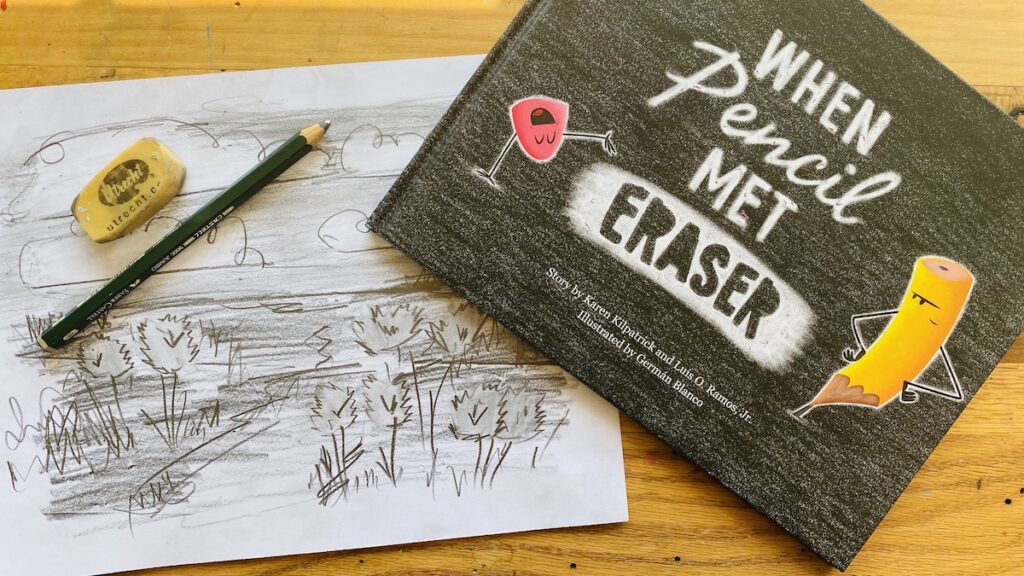
Continue encouraging inventiveness, even when your students may only have minimal supplies available. Using only a pencil and paper is a great starting point to see what can be made, with restrictions.
Return to Learn with The Art of Education University
What other lessons can be created using only a pencil and paper?
Why is it important to teach our students about how to be inventive?
Who is your favorite pencil artist?
Magazine articles and podcasts are opinions of professional education contributors and do not necessarily represent the position of the Art of Education University (AOEU) or its academic offerings. Contributors use terms in the way they are most often talked about in the scope of their educational experiences.
